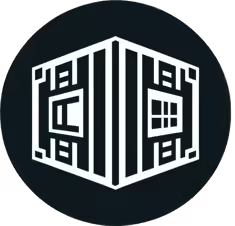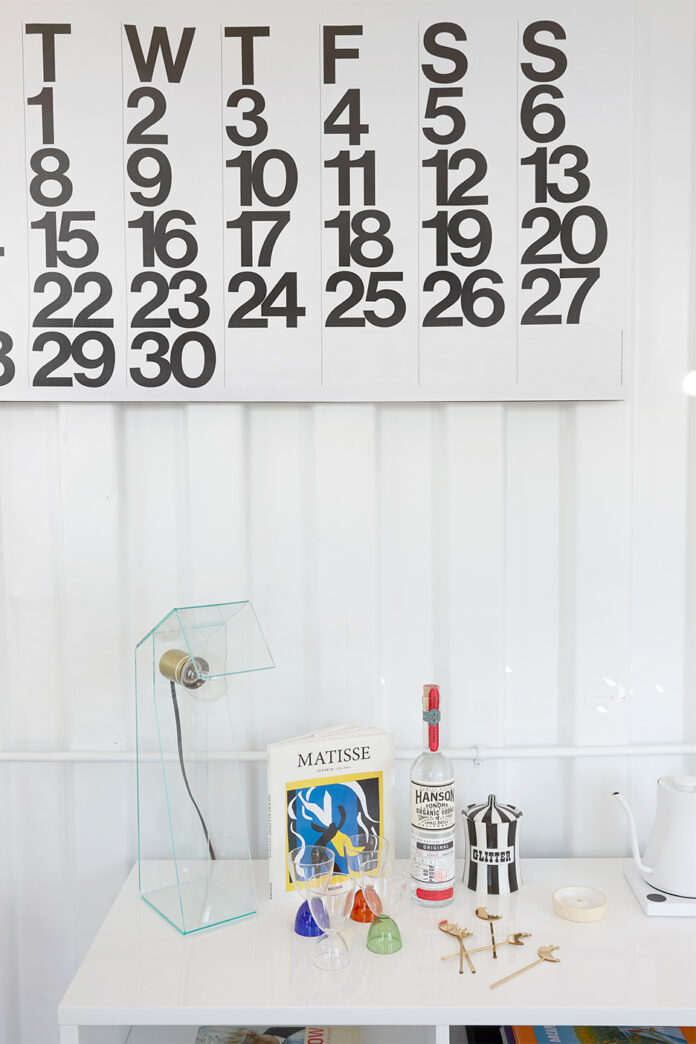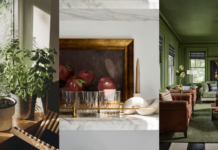In an age where remote work has transformed the way many of us approach our professional lives, the need for a functional yet inspiring workspace has never been more essential. For those living in urban landscapes, this challenge often comes hand-in-hand with spatial constraints. However, for event production designer and creative director Layne Kula of Penny Layne Creative, an ingenious solution awaited just outside her door—a shipping container.
The Beginning: A Shipping Container in Highland Park
When Layne Kula and her husband purchased their home in Highland Park, Los Angeles, they discovered a shipping container left behind by the previous owners. While most might see just an unused storage space, Kula recognized its potential to serve as a separate work environment. “This setup gave me a little bit of permission to have that office experience, but I don’t actually have to leave my house,” she explains.
The original state of the container was less than ideal; the interior was in disarray, though the structure itself was sound, featuring wood flooring and a large glass window. Before diving into renovations, Kula estimated that a standard shipping container could typically be obtained for around $1,400, making this option both economical and practical.
Renovation: Shaping a Functional Workspace
Kula embarked on a mission to revitalize the container space. The first step was to install an air conditioning unit to combat the sweltering California heat. Proper electrical wiring from the previous owners made this task a breeze, enabling a comfortable work environment year-round. Additionally, Kula added a small awning to shelter the entrance, further enhancing the usability of her outside workspace.
Cooling Off: Ensuring Comfort
With summers soaring in Southern California, Kula’s additions were crucial. The awning, constructed from 2-by-4s, was primed and painted, helping to shield the container from harsh sunlight. While the window isn’t operable, the design still promotes ventilation by allowing fresh air to flow freely when the sliding doors are open.
Creating Ambiance: Choosing Colors Wisely
To transform the burgeoning workspace from a steel box into a serene office, Kula opted for Simply White by Benjamin Moore. This bright white paint provided a refreshing contrast to the often-stuffy feeling of metal containers. Kula was keen on creating not just a workspace but an environment that inspired creativity. “Everyone is into that very relaxed California-boho look right now, but I was going for an underground Berlin factory vibe,” she says, showcasing her unique aesthetic vision.
Designing with Simplicity: Furniture Choices
Space efficiency was paramount in a container barely measuring 150 square feet. Kula favored sleek furniture choices, including a powder-coated steel chair from Bend Goods and a simple IKEA desk. This minimalist approach ensured that the area remained open and uncluttered—ideal for a productive mindset. The understated design of her desk allowed for easy cleaning, removing the worry of art supplies marring an expensive table.
Maintaining Clarity: The Importance of Decluttering
Kula’s philosophy extended beyond just aesthetics. She emphasized the importance of keeping the space clear of clutter. An acrylic coffee table in the center, a striking neon light on the wall, and low-profile storage options foster a sense of openness and creativity. “I find I do better work the more I can declutter a space,” she reflects, implying that simplicity enhances productivity and focus.
Bringing the Outdoors In
One of the most significant benefits of working in a shipping container is the connection to nature. With the sliding doors frequently open, Kula invites the sights and sounds of the outside world into her workspace. This embrace of nature not only promotes well-being but also fortifies her design ethos, making the container feel integrative with its surroundings rather than isolated.
The Long-Term Vision: Rethinking Office Spaces
As Kula and her husband enjoy the benefits of their transformed shipping container, they acknowledge its potential permanence or future transience. Whether they’ll take it with them if they decide to move is uncertain, but the idea of a detached workspace is a concept they’ve fully embraced. “Spare bedrooms are hard to come by in Los Angeles,” Kula notes, showing a pragmatic approach to the ongoing challenge of urban living.
Conclusion: Innovating Your Space
Kula’s journey of transforming a shipping container into a functional, aesthetically pleasing workspace is a testament to creativity, resourcefulness, and vision. It underscores a significant trend in modern workspace design: rethinking conventional office spaces can lead to innovative solutions that cater to our contemporary needs. Whether you’re facing spatial constraints or simply seeking inspiration, Kula’s approach offers a fresh perspective on creating personal workspaces that reflect individual needs and style.














